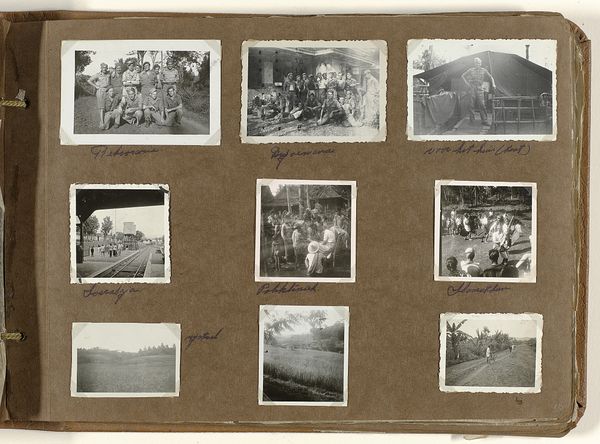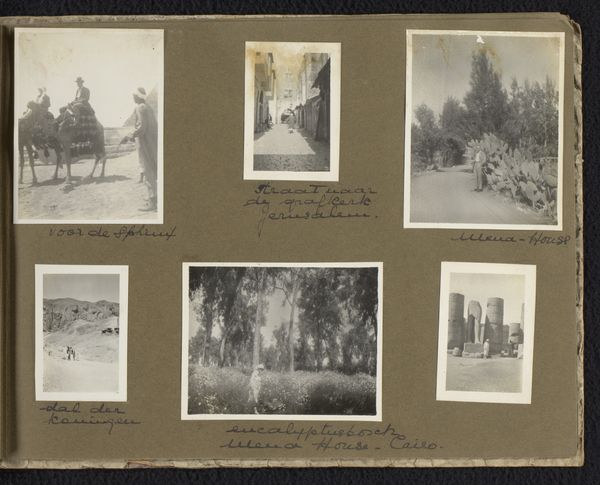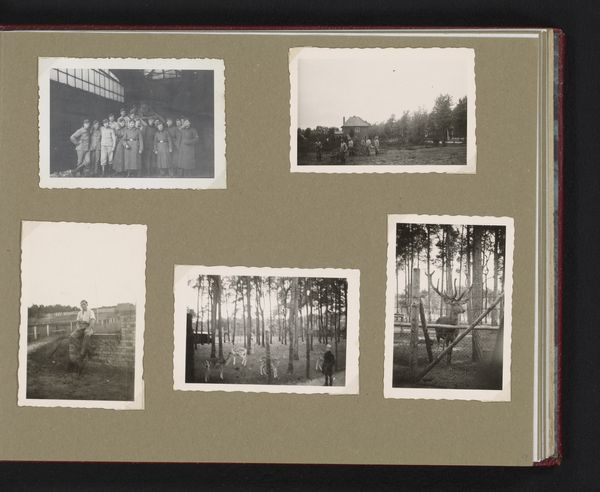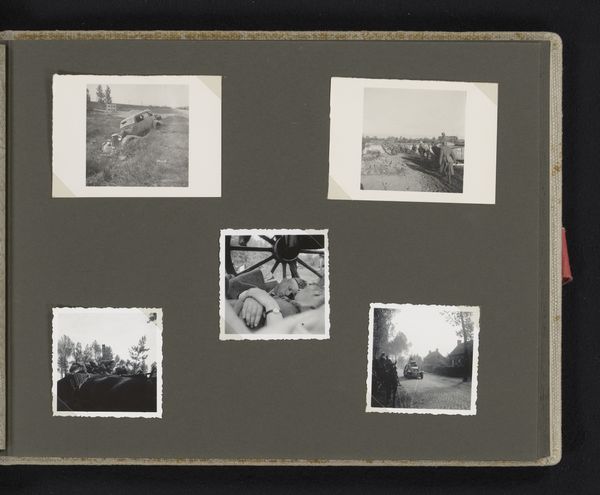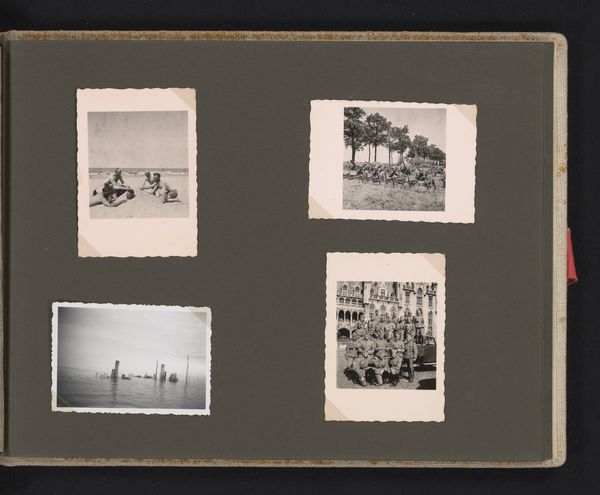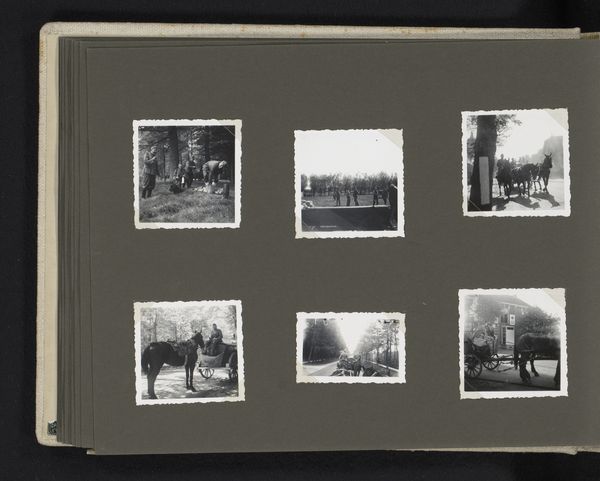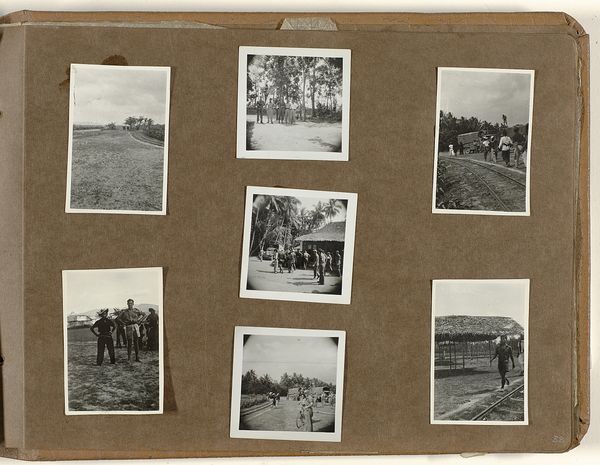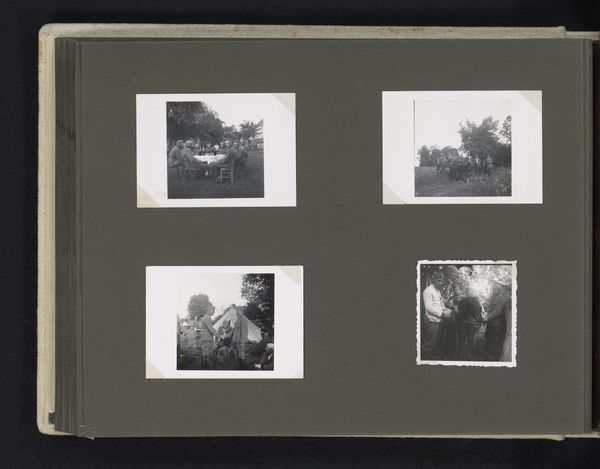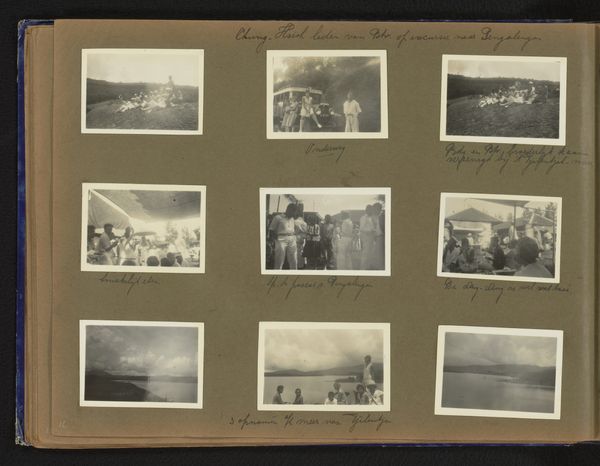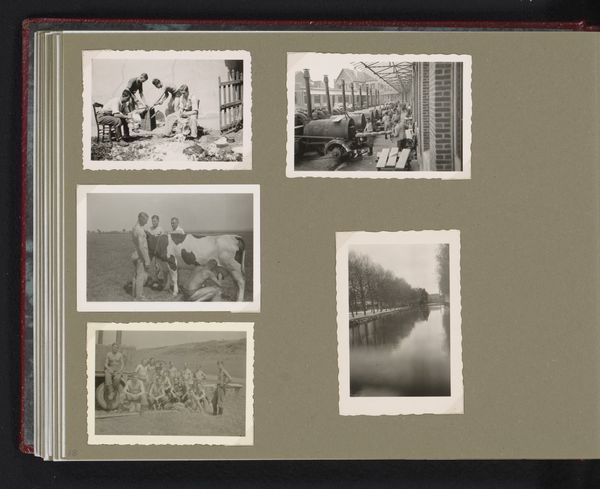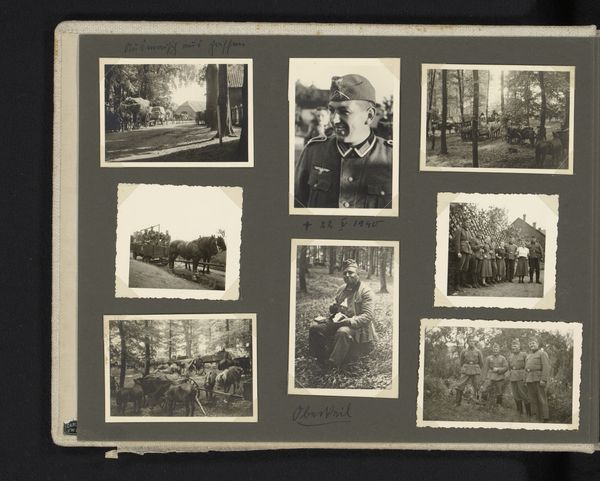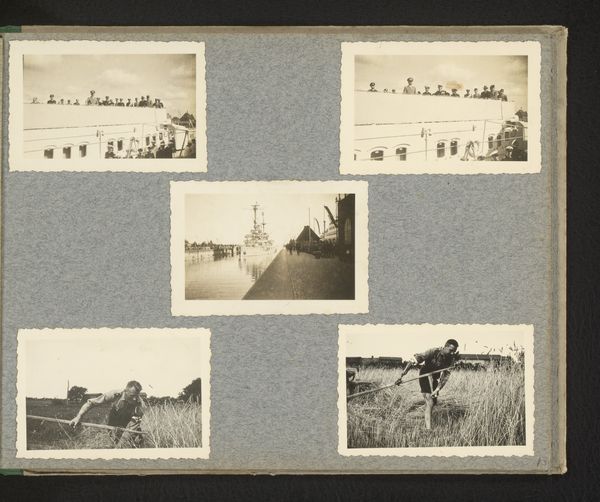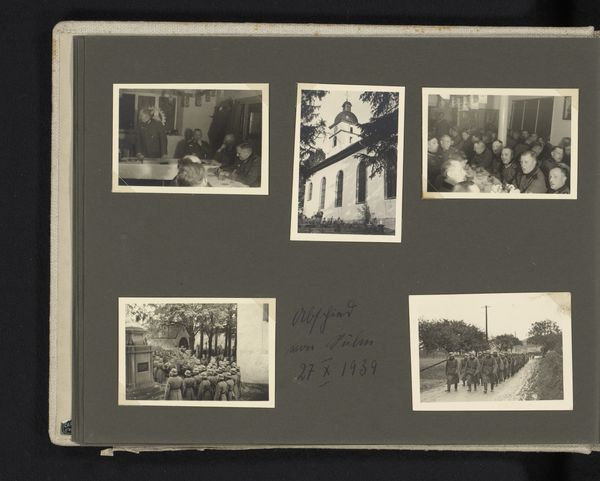
photography, gelatin-silver-print
#
landscape
#
winter
#
street-photography
#
photography
#
gelatin-silver-print
#
realism
Dimensions: height 60 mm, width 90 mm, height 223 mm, width 295 mm
Copyright: Rijks Museum: Open Domain
Curator: These six photographs, collectively titled "Winter," were captured between 1940 and 1941. They are gelatin-silver prints presented in an album. Editor: My initial impression is one of quiet solitude. The monochrome palette emphasizes the stark beauty of a winter landscape, but there’s also an undercurrent of…resignation, maybe? Especially in the images with groups of figures. Curator: That's interesting. Considering the time period, that sense of resignation might reflect the socio-political context of World War II, already impacting daily life even if not explicitly depicted here. This anonymous photographer offers us a slice of Dutch life under duress. Editor: Precisely. It's not just pretty snow; it's people going about their lives under occupation. Look at the top right image, with the figures clustered together in the open field. Their stance, their posture – it evokes feelings of forced migration. Are we seeing forced labor details being mustered here? Curator: It’s a compelling reading, and very possible. These photographs function as social documents, inadvertently recording the hardships endured by ordinary people during the German occupation. The "realism" style underscores the unfiltered representation of their circumstances. It provides an intimate view of the period. Editor: And yet, there's also resilience. Children playing in the snow near what appears to be an officer outside of a storefront seems to indicate an acceptance, and that survival is its own defiance. It's complex, and speaks to the complexities of wartime existence. The landscape seems to offer escape but reminds us that safety cannot be taken for granted. Curator: That nuance is critical. These images capture moments of normalcy amid profound disruption, turning seemingly pastoral scenes into charged documents of the past. A testament, in its humble way, to both suffering and survival. Editor: Well, viewing it from this critical framework certainly provides a far deeper experience. It reminds us of art’s enduring capacity to function as silent, yet potent witness.
Comments
No comments
Be the first to comment and join the conversation on the ultimate creative platform.
